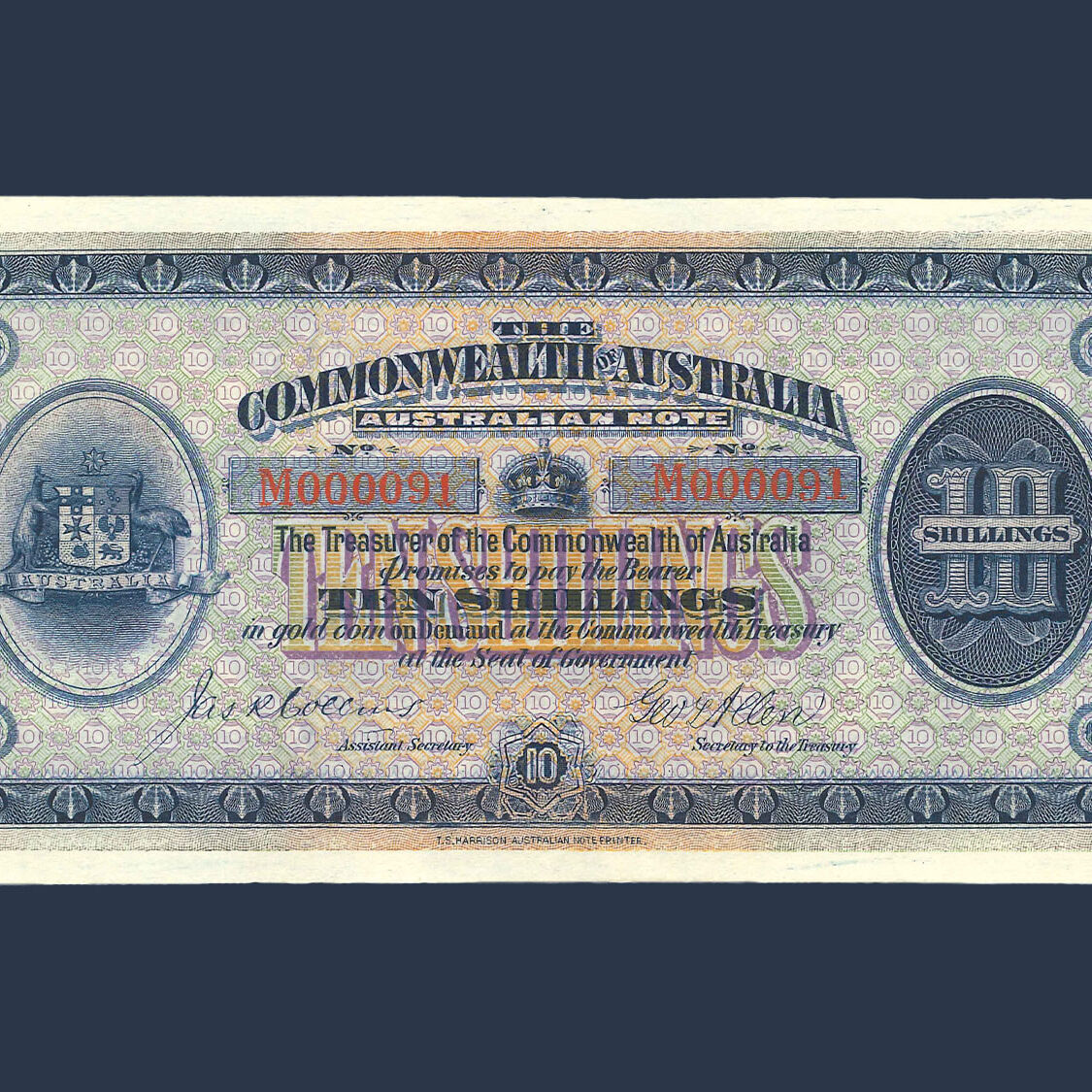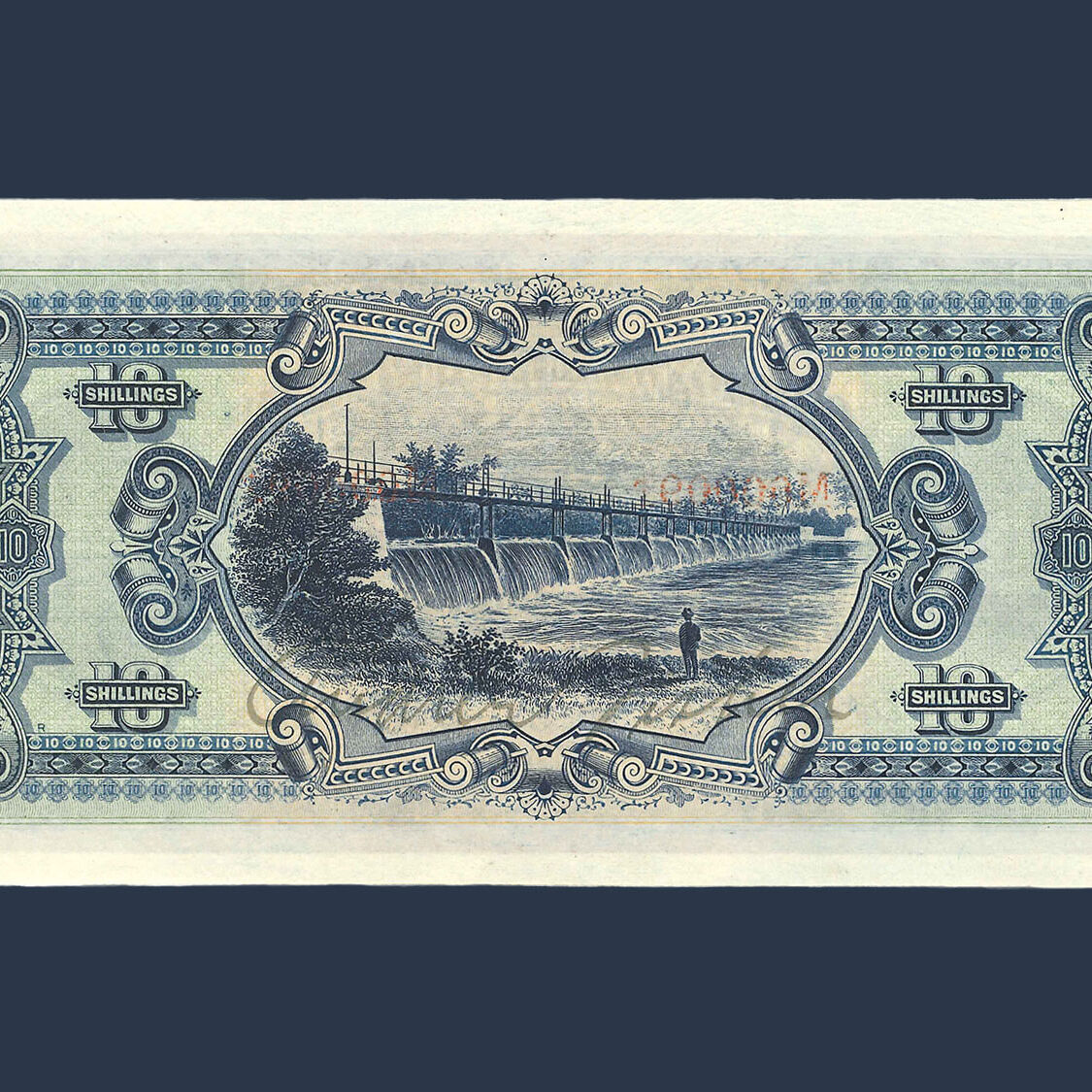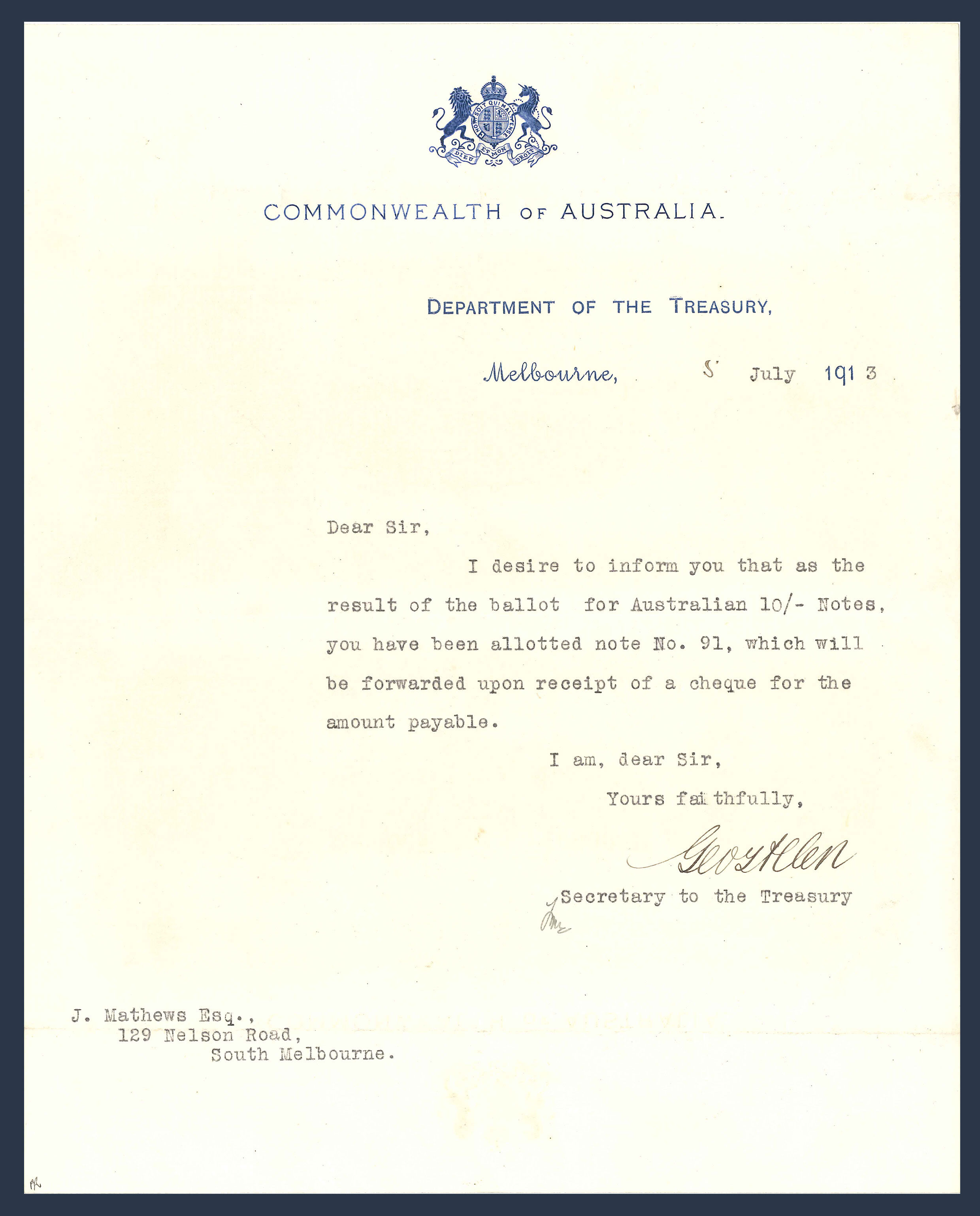1913 Presentation Note of the Commonwealth of Australia's first paper currency. A Ten Shillings hand-numbered M000091 in red ink and secured in a ballot by Jim Mathews, Federal Member for Melbourne Ports, 1906 - 1931. The only known example signed by the then Prime Minister, Andrew Fisher. Sold with official Treasury letter confirming original ownership.


The rarity of the 1913 Presentation Note.
History records that of the five hundred notes hand numbered at the ceremony, Presentation Notes numbered 1, 2 and 3 were gifted to the Governor General, Lord Denham, and his two children.
The remaining notes numbered 4 to 102 were distributed by ballot to thirty-six VIPs that attended the ceremony. (Several attendees requested and received multiples.)
Author Greg McDonald contends that notes 103 to 500 were either destroyed or went into circulation, the former the most likely scenario thereby maintaining the integrity of the presentation notes.
Seventeen presentation notes have come to the market at auction over the last fifty-plus years.
Our research confirms that most presentation notes show serious signs of mishandling with some accidentally making their way into circulation.
Only three out of the seventeen presentation notes come up for special mention for their exemplary state, with no folds, no tears, no pin holes. And no signs of wear.
They being notes numbered 4 and 5 (received by Prime Minister Andrew Fisher) and note numbered 91 (this note, received by James Mathews).
The most recent sale of a Presentation Note occurred in October 2020. The note numbered M000076, described as having a light centre fold and six small pin holes, sold at I.A.G. Auction for $109,800.
Our thanks to respected author and numismatist Greg McDonald for his extensive research on the 1913 Presentation Notes.
A defining symbol of Australia’s nationhood.
Andrew Fisher was one of Australia’s longest serving Prime Ministers. He is remembered as one of Australia’s greatest nation-building Prime Ministers. Committed to politics, he was elected to the Queensland Parliament in 1893 and in 1901, following Federation, became an inaugural member of the first Federal Parliament of Australia.
Andrew Fisher served three terms as Prime Minister, 1908 – 1909, 1910 – 1913 and his last term of 1914 - 1915.
Fisher sought to construct a nation from the former colonies and to invest it with new, all embracing symbols. He breathed a national spirit into all facets of his political and his personal life. It was the Fisher Government that radically changed the Australian Coat of Arms to reflect a more nationalistic vision of Australia.
Andrew Fisher’s vision for Australia included a Commonwealth banknote issue that would provide a stable, unified currency to facilitate economic growth and to re-invigorate confidence in a banking sector that had all but collapsed two decades earlier.
He believed the notes would underpin his efforts to unify Australia as a nation.
To promote a greater sense of public involvement in the new note issue, the Government launched a competition, offering a £50 prize for the winning design. A formal announcement of the competition appeared in the Commonwealth of Australia Gazette, 5 November 1910.
The brief was simple. The note had to be attractive with subdued harmonious colours and it had to baffle the forger. The new Coat of Arms was required to be a prominent part of the successful design for the face of the new Australian currency, while a scene of Australia was required to adorn the back of the note.
Artist Hugh Patterson, who re-designed the Coat of Arms was appointed by Fisher to the committee supervising the design competition. The winning design was however deemed unsuitable by the Committee.
The Government turned to London and engaged the services of Bradbury Wilkinson & Co plate engravers.
© Copyright: Coinworks

